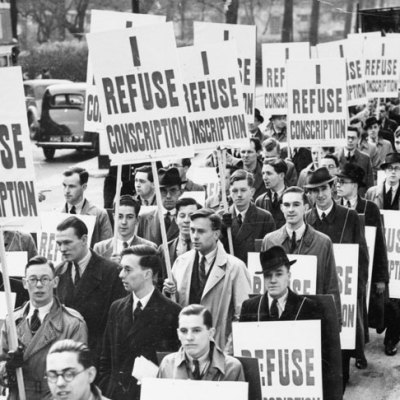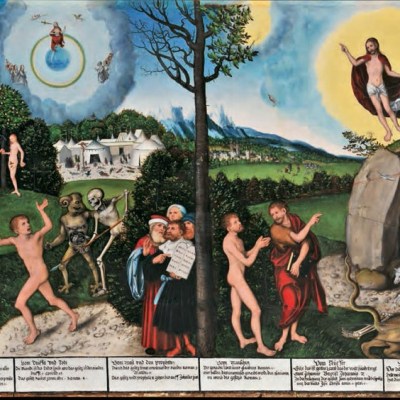Writing in December 1954, shortly after Matisse’s death, Clive Bell called time on the artist’s rivalry with Picasso
For at least a century it seems as though Matisse has been defined by his supposed rivalry with Picasso, although curiously the reverse has never been the case. In a predominantly fictional duel, which one suspects has given more delight to critics than it ever did to either participant, Matisse usually emerges if not the loser then certainly looking rather bruised.
His work is the subject of an exhibition opening at the Museum of Fine Arts, Boston, this month (‘Matisse in the Studio’; 9 April–9 July). Matisse first encountered Picasso in Paris around 1906, their link being Gertrude Stein and her brother Leo. Whereas Matisse was already established and admired in French art circles, the younger man had only recently left Spain and was still finding his way. According to this narrative, Picasso at once resolved to outstrip Matisse and a succession of skirmishes followed, beginning with Les Demoiselles d’Avignon (1907), painted as a riposte to Le Bonheur de vivre, which had been exhibited a year earlier.
Certainly both men were acutely conscious of the other. In fact, in his 1977 biography of Picasso, Pierre Daix quotes the artist as saying: ‘You have got to be able to picture side by side everything Matisse and I were doing at that time. No one has ever looked at Matisse’s painting more carefully than I; and no one has looked at mine more carefully than he.’
This remained the case, but whether anyone else paid as close or even equal attention to both men’s output is open to question. In any case, eventually the concept of Matisse versus Picasso had to run out of steam, as noted by Clive Bell in the December 1954 issue of Apollo. Matisse had died the previous month and Bell opened by mocking the very idea that the deceased’s work should be considered in juxtaposition with that of Picasso. ‘In places where progressive drawing masters meet civil servants and newspaper men,’ he wrote, ‘you may still hear opposed in high Plutarchian fashion the art of Picasso to the art of Matisse. All can see, or say they see, that Picasso is an inventor and innovator of genius, while most reckon Matisse an attractive decorator, essentially conservative and unenterprising.’
Bell was being ironic, of course, but the real irony is that he had, at least in part, been responsible for encouraging the popular image of the two feuding artists that he now mocked. In an article published in The Athenaeum in May 1920, he had presented a comparison of Matisse and Picasso. During the course of his cleverly composed text, while insisting ‘I do not presume to judge between one method of creation and another; I shall not judge between Matisse and Picasso,’ Bell engaged in personal adjudication. Much of this took the Ciceronian device of noting negative remarks made by other critics about Matisse before proceeding to decry them. At one point, he drew comparisons with the ‘pretty, tinkley stuff of Mozart’, but then hastened to comment: ‘Those who call the art of Matisse slight must either be insensitive or know little of it.’ In 1920, as far as Bell was concerned, Matisse had been ‘blest with extraordinary sensibility both of reaction and touch’, and as a result ‘there is little or nothing to be learnt, since Matisse relies on his peculiar sensibility to bring him through. If you want to paint like him, feel what he feels, conduct it to the tips of your fingers, thence onto your canvas, and there you are. The counsel is not encouraging.’
Picasso on the other hand, despite not wishing to be so, was ‘the paramount influence in modern painting…All the world over are students and young painters to whom his mere name is thrilling; to whom Picasso is the liberator. His influence is ubiquitous: even in England it is immense.’ Furthermore, according to Bell, ‘besides being extraordinarily inventive, Picasso is what they call “an intellectual artist”’. Who ‘they’ might be he did not elucidate, but Bell helpfully informed his readers: ‘An intellectual artist is one who feels first – a peculiar state of emotion being the point of departure for all works of art – and goes on to think.’ In other words, in their purported single combat Matisse could manage feeling but only Picasso both felt and thought.
Thankfully, by the time he came to write a tribute to Matisse in Apollo 24 years later, Bell had dispensed with this nonsense and was able to pay tribute where tribute was due. Matisse, he declared, ‘was the innovator’ who had played a leading part in the last century’s cultural revolution. That, surely, was more than enough.
From the April 2017 issue of Apollo. Preview and subscribe here.


